Alabama, New Jersey and other states to require free period products in schools for grades 6 through 12
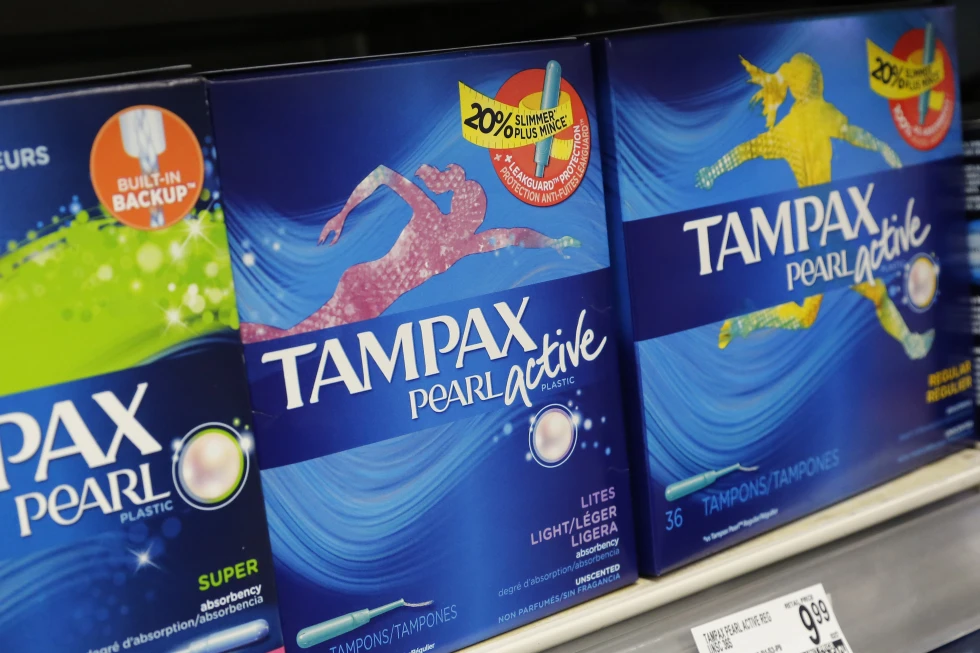
New Jersey will require school districts to offer free menstrual products for grades six through 12 under a new law Gov. Phil Murphy signed Wednesday. Murphy, a Democrat, said in a statement that the measure is aimed at promoting equity “at every level” in the state. “When students can’t access the menstrual products they need for their reproductive health, the potential stress and stigma too often distracts them from their classes or forces them to skip school entirely,” he said. Under the bill, school districts are required to ensure that students in schools with students from grade six through 12 have access to free menstrual products in at least half of the female and gender-neutral bathrooms. The state will bear any costs incurred by schools under the legislation. The legislature’s nonpartisan Office of Legislative Services estimated the requirement will cost between $1.8 million and $3.5 million for the first full school year and from $1.4 million to $2.9 million in subsequent years. The cost is a fraction of the state’s $54.3 billion budget. The requirement will affect about 1,400 schools. The total enrollment of female students in grades six through 12 in these schools approximated 354,497, according to the Legislature. New Jersey joins at least 10 other states and the District of Columbia that have established or expanded requirements for free menstrual products in schools since 2010, according to the National Conference of State Legislatures. Among the states that passed similar measures recently include Alabama, Delaware, and Utah. The bill passed the Democrat-led Legislature nearly unanimously, with only one “no” vote. “Menstrual hygiene products are a necessity, not a luxury. When this becomes an obstacle and decisions are made to not attend school, the loss is greater than just the one day,” Senate Majority Leader Teresa Ruiz said. Republished with the permission of The Associated Press.
Kay Ivey gets a ‘D’ in report card stacking up U.S. governors’ fiscal policies
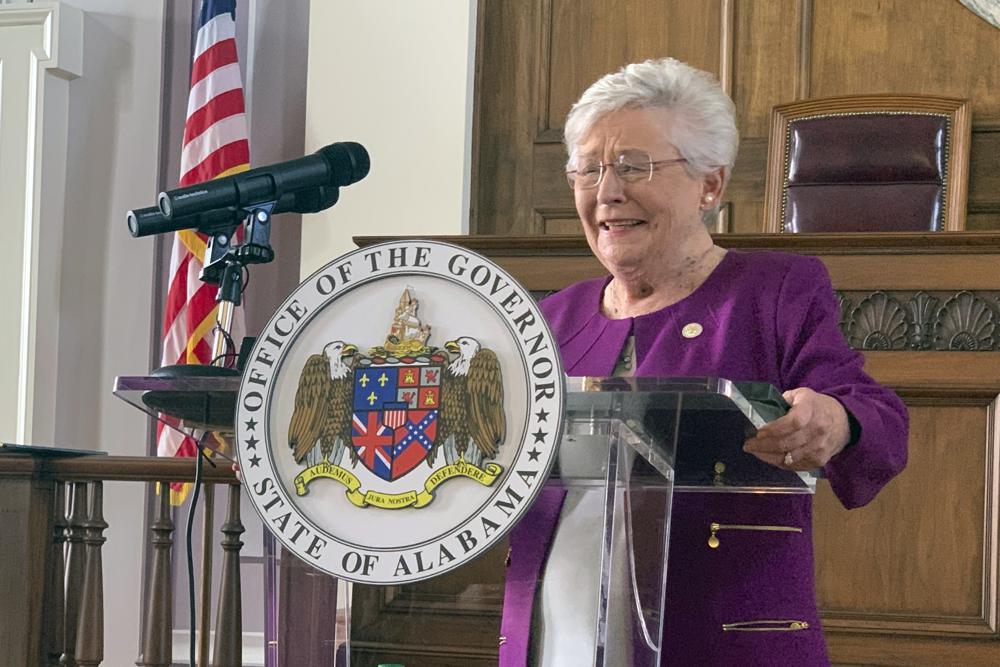
Gov. Kay Ivey’s years-long support of an increased gas tax in Alabama landed her in the bottom tier of a new report grading states’ top-level leaders on their fiscal policies. The Cato Institute, a public policy organization focused on limited government, recently released its 2022 Fiscal Policy Report Card on America’s Governors. Co-authors Chris Edwards and Ilana Blumsack gave Ivey, who is seeking a second full term in office this fall, a score of “D.” In their analysis of Ivey’s fiscal performance throughout her first full term in office, Edwards and Blumsack elaborated on why they gave the governor a low score. “Running for a full term in office in 2018, Ivey said she opposed tax increases,” Edwards and Blumsack wrote. “Nonetheless, she has raised some taxes, including the gas tax by 10 cents per gallon in 2019 and an assessment on nursing home facilities in 2020.” In their report, the authors did note some of Ivey’s more recent tax-cutting overtures in her run-up to reelection and against the backdrop of inflation. “Ivey switched direction recently and approved modest tax cuts, including raising the standard deduction, exempting $6,000 of retirement income from taxes, increasing an adoption credit, and exempting small businesses from the business privilege tax,” Edwards and Blumsack wrote. Early this year, during the most recent legislative session, Ivey also touted her support of House Bill 231, which she signed into law in February. “I am proud to sign this needed tax relief into law so that money will return directly into the hands of hardworking Alabamians,” Ivey said in the news release. Ivey’s support of a gas tax, and her denial of cutting it back this spring, has been a source of criticism since she first signed the legislation into law in 2019. Proceeds from portions of the increased gas tax have been poured into Ivey’s 2019 Rebuild Alabama Act, which required the state’s Department of Transportation to annually allocate $10 million from excised gas taxes. “Since becoming governor, with the support of Rebuild Alabama, we have embarked on more than 1,500 new road and bridge projects worth more than $5 billion,” Ivey said in March. “We certainly have more work in front of us, and I am proud to continue those efforts today.” While the Cato Institute’s newest report did not have a clear-cut partisan divide in the granular state-by-state rankings, there was a prevailing theme. The top-performing governors in this year’s report were Republican, while the lowest-scoring leaders were Democrats. “The results are data-driven. They account for tax and spending actions that affect short-term budgets in the states,” Edwards and Blumsack said of their methodology. “But they do not account for longer-term or structural changes that governors may make, such as reforms to state pension plans.” Five governors, all Republican, received an “A” in this year’s Cato Institute report: Doug Ducey of Arizona; Brad Little of Idaho; Kim Reynolds of Iowa; Pete Ricketts of Nebraska; and Chris Sununu of New Hampshire. On the bottom end, eight Democrat governors received an “F” in the Cato Institute’s analysis of their fiscal policies: Kate Brown of Oregon; Jay Inslee of Washington; Phil Murphy of New Jersey; Gavin Newsom of California; J.B. Pritzker of Illinois; Tim Walz of Minnesota; Gretchen Whitmer of Michigan; and Tom Wolf of Pennsylvania. Republished with the permission of The Center Square.
Stark political divides loom as U.S. governors gather

With stark political divides on abortion, gun violence, and other issues threatening to overshadow their meeting, the nation’s governors sought to find common ground — on other issues. The National Governors Association formally kicked off its summer gathering Thursday, the first in-person meeting since 2019, before the COVID-19 pandemic. It follows recent U.S. Supreme Court rulings that have deepened the rift between red and blue states by overturning Roe v. Wade and striking down gun restrictions in New York. Leaders say there’s still room for bipartisanship. “It’s about trying to find things that we can work on together, and that’s plentiful,” said Arkansas Gov. Asa Hutchinson, a Republican who is wrapping up his yearlong term as the association’s chair. Hutchinson is handing the reins of the group to Democratic Gov. Phil Murphy of New Jersey, who will serve as its next chair. The two governors last month announced a bipartisan task force to make recommendations on preventing mass shootings following the massacre at a Texas elementary school that killed 19 children and two teachers. The task force was announced before President Joe Biden signed into law a sweeping, bipartisan gun violence measure that includes billions in new funding for mental health and school safety. The task force is comprised of eight governors, equally divided between Republicans and Democrats. Hutchinson said he sees the group helping shepherd that law’s implementation at the state level. Republican Gov. Spencer Cox of Utah, a member of the task force, acknowledged that any change to gun policy would invite controversy in his state, yet he encourages politicians to listen to proposals from across the political spectrum, including funding for school security, counselors, gun buybacks and red flag laws. “I’ve asked everyone to be open to every conversation,” Cox, the association’s incoming vice chairman, said in a press conference last month. The public agenda at the event in Maine avoided any high-profile partisan issues. Sessions on Thursday featured Intel CEO Patrick Gelsinger and the leader of a global robotics competition for a discussion of computer science education. Another session focused on travel and tourism. The governors also held several other events, including a mixer Wednesday evening and a scheduled lobster bake Thursday evening. Security was tight with road closures and a large police presence. Organizers declined to say if there was a specific threat or concern. Nineteen governors, including the governor of Puerto Rico, attended the event. Missing were governors of several large states, including California Gov. Gavin Newsom, Texas Gov. Greg Abbott, New York Gov. Kathy Huchul, and Florida Gov. Ron DeSantis. Hutchinson said he doesn’t see the governors association addressing abortion following the reversal of Roe. That ruling has pitted states against each other, with “trigger” bans taking effect almost immediately after the ruling in a number of states. Republicans in some states are looking at ways to prevent women from going out of state for abortions, steps that could include going after abortion providers. In response, some Democratic governors have signed measures banning their state’s law enforcement agencies from enforcing other states’ abortion bans. That includes Democratic Gov. Janet Mills, who formally welcomed the governors to her state on Thursday. When she signed an executive order last week, Mills said she “will stand in the way of any effort to undermine, roll back or outright eliminate the right to safe and legal abortion in Maine.” Partisanship was underscored on the eve of the gathering as New Hampshire Gov. Chris Sununu campaigned alongside fellow Republican Paul LePage, a former Maine governor who hopes to unseat Mills. Newsom, the governor of California, has even run a campaign ad in Florida criticizing that state’s Republican leaders. And protesters supporting reproductive choice gathered outside an event some of the governors attended on the Portland waterfront. Nonetheless, Hutchinson said the group has been able to work together on other issues, being a voice for the states during the COVID-19 pandemic and during negotiations over the bipartisan infrastructure package. Massachusetts’ Republican Gov. Charlie Baker said the governors tend to get along with each other — and they tend to focus on things where they can get results instead of areas of disagreement. “While we will disagree on different issues, we as a group have much more in common than what sets us apart,” said Mills, the host governor. Hutchinson’s chairmanship of the group has elevated his national profile as he considers running for president in 2024. The two-term governor, who leaves office in January, has criticized former President Donald Trump and has urged fellow Republicans to move on from the 2020 election. Murphy is coming into the chairmanship after narrowly winning reelection as governor last year. An unapologetic progressive, he recently signed legislation enshrining abortion rights into law and a new package of gun control bills. Even though they’re at opposite ends of the political spectrum, Hutchinson had words of praise for his successor. “Part of being a human being is that you recognize good quality that you see in people, even though we disagree fundamentally, and you’re on a different team. I think that’s needed in America today,” he said. Republished with the permission of The Associated Press.
Kamala Harris, Jill Biden on the road to promote aid plan
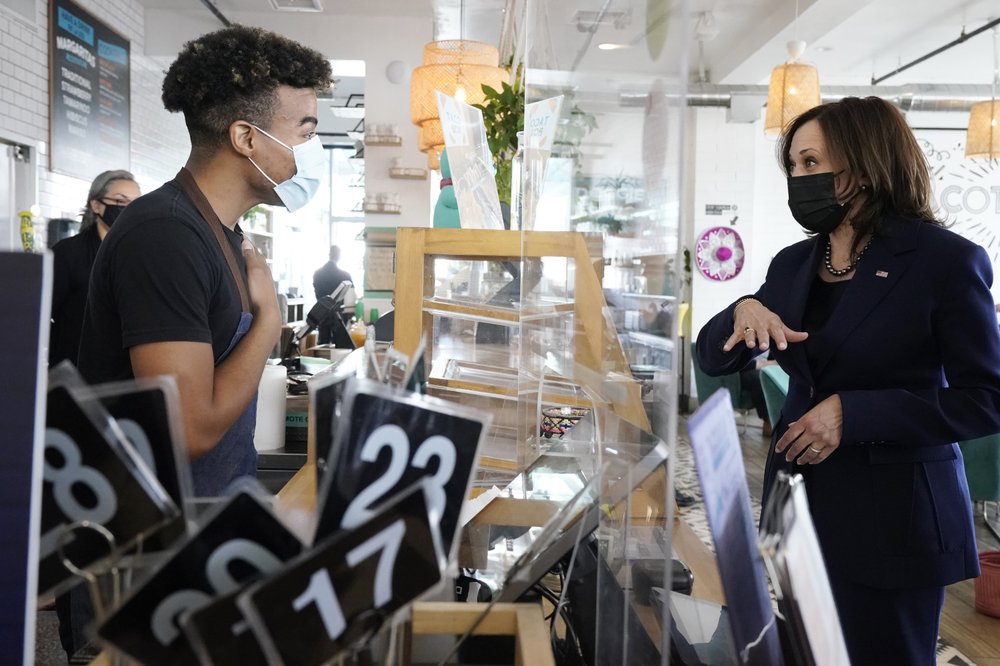
From a vaccination site in the desert West to a grade school on the Eastern seaboard, President Joe Biden’s top messengers — his vice president and wife among them — led a cross-country effort Monday to highlight the benefits of his huge COVID relief plan. Biden, Vice President Kamala Harris, and their spouses have launched an ambitious tour this week to promote the $1.9 trillion plan as a way to battle the pandemic and boost the economy. The roadshow — dubbed the “Help is here” tour by the White House — began with Harris visiting a COVID-19 vaccination site and a culinary academy in Las Vegas and first lady Jill Biden touring a New Jersey elementary school. Biden himself heads out Tuesday. “We want to avoid a situation where people are unaware of what they’re entitled to,” Harris said at the culinary academy. “It’s not selling it; it literally is letting people know their rights. Think of it more as a public education campaign.” The White House is wasting no time promoting the relief plan, which Biden signed into law last week, looking to build momentum for the rest of his agenda and anxious to avoid the mistakes of 2009 in boosting that year’s recovery effort. Even veterans of Barack Obama’s administration acknowledge they did not do enough then to showcase their massive economic stimulus package. Biden stayed back in Washington for a day, declaring that “hope is here in real and tangible ways.” He said the new government spending will bankroll efforts that could allow the nation to emerge from the pandemic’s twin crises, health and economic. “Shots in arms and money in pockets,” Biden said at the White House. “That’s important. The American Rescue Plan is already doing what it was designed to do: make a difference in people’s everyday lives. We’re just getting started.” Biden said that within the next 10 days, his administration will clear two important benchmarks: distributing 100 million stimulus payments and administering 100 million vaccine doses since he took office. To commemorate those milestones, Biden and his top representatives are embarking on their most ambitious travel schedule of his young presidency, visiting a series of potential election battleground states this week. The sales pitch was leaving Republicans cold. Senate GOP leader Mitch McConnell dismissed the target of doses that Biden set when he took office as “not some audacious goal” but just the pace that he inherited. And he mocked Biden’s talk of Americans working toward merely being able to gather in small groups by July 4th as “bizarre.” The Biden plan cleared Congress without any backing from Republicans, despite polling that found broad public support. Republicans argued the bill was too expensive, especially with vaccinations making progress against the virus, and included too many provisions not directly linked to the pandemic. After beginning the sales campaign with high-profile speeches, Biden will head to Pennsylvania on Tuesday and then join Harris in Georgia on Friday. Others on his team are visiting the electorally important states of Nevada, Colorado, New Mexico, and New Hampshire. The trip Monday marked Harris’ first official journey in office and included an unscheduled stop at a vegan taco stand as well as a coffee stand at the Culinary Academy Las Vegas. White House press secretary Jen Psaki said, “We want to take some time to engage directly with the American people and make sure they understand the benefits of the package and how it is going to help them get through this difficult period of time.” The White House has detailed a theme for each day, focusing on small businesses, schools, home evictions and direct checks to most Americans. Jill Biden was joined by New Jersey Gov. Phil Murphy on a tour Monday of Samuel Smith Elementary School in Burlington, where she highlighted steps the school took to reopen. But her tour revealed the challenges ahead: In one classroom she visited, only two students were in attendance for in-person learning while the other 17 were virtual. The first lady sat down at a computer to say hello to the remote learners. “I just I love being here at a school again: Educators, parents and students, the entire school has come together to bring kids back to the classroom,” she said. “But even with your best efforts, students can’t come, they can’t come in every day, which means that their parents are still having to take time off of work or figure out childcare solutions. And this school, like schools across this country, can’t fully reopen without help.” The president on Monday also announced that he had chosen Gene Sperling, a longtime Democratic economic policy expert, to oversee the massive stimulus package, the role Biden himself had played for the 2009 economic rescue package. The goal, Biden said, is to “stay on top of every dollar spent.” “I learned from my experience implementing the Recovery Act just how important it is to have someone who can manage all the moving parts with efficiency, speed and integrity, and accountability,” said the president. The plan’s key features include direct payments of $1,400 for most single taxpayers, or $2,800 for married couples filing jointly, plus $1,400 per dependent — a total of $5,600 for a married couple with two children. The payments phase out for people with higher incomes. An extension of federal unemployment benefits will continue through Sept. 6 at $300 a week. There’s $350 billion for state, local and tribal governments, $130 billion for K-12 schools, and about $50 billion to expand COVID-19 testing, among other provisions. Restaurants and bars that were forced to close or limit service can take advantage of a new multibillion-dollar grant program, and the plan also has tens of billions of dollars to help people who have fallen behind on rent and mortgage payments. Harris’ husband, Doug Emhoff, joined his wife for the Western trip, visiting a food relief organization Monday in Las Vegas and participating in a listening session with the organization’s partners. In
States confront practical dilemmas on reopening economies
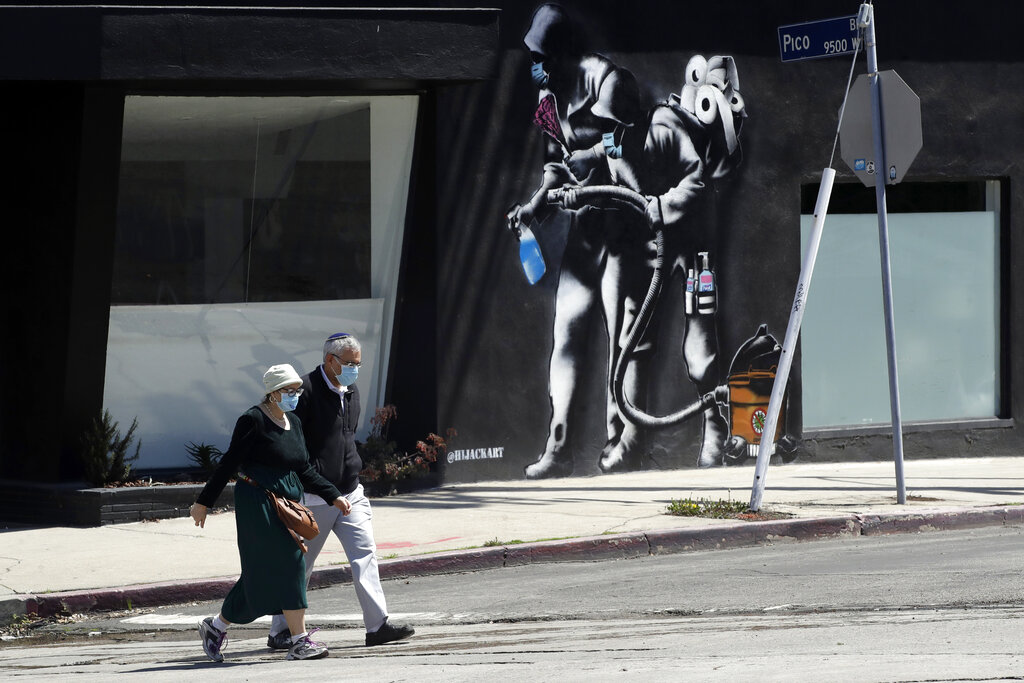
There isn’t a consensus on how to reopen economies.
Donald Trump claims ‘total’ authority, over govs, to reopen economy
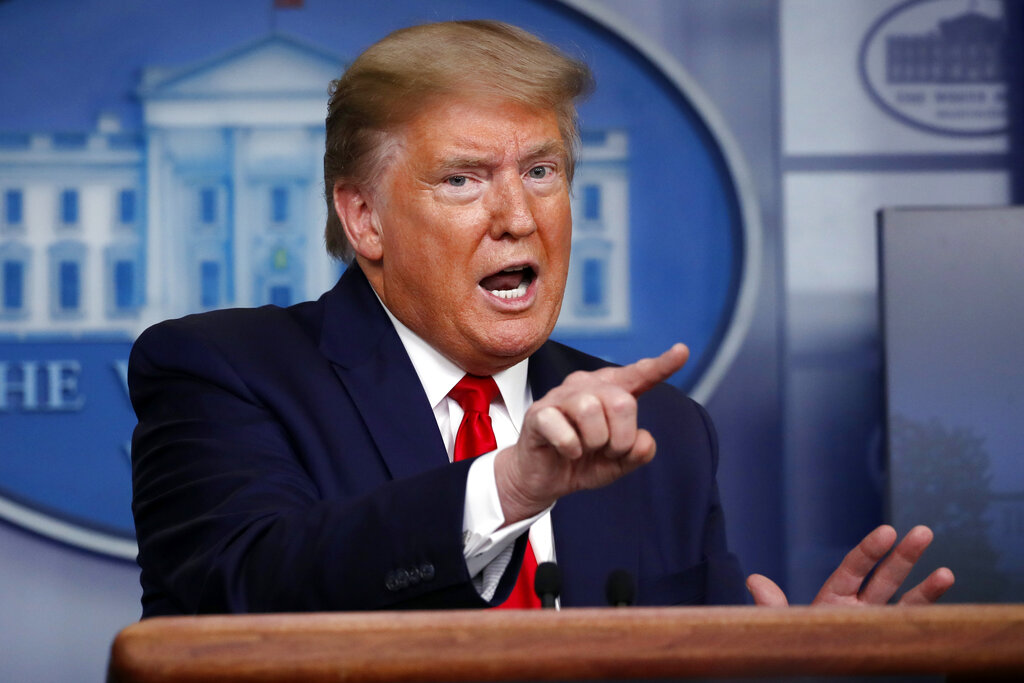
Trump would not offer specifics about the source of his asserted power.
No halt to culture wars during coronavirus outbreak

Some liberals are accusing conservatives of using this crisis to advance long-held goals.
U.S. states share, get creative in hunt for medical supplies

The U.S. Department of Health and Human Services confirmed Wednesday that the federal stockpile is officially bare.


